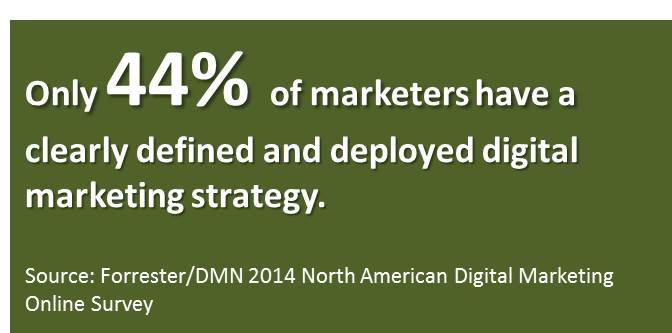Start Creating Digital Experiences To Unleash Digital’s Brand Building Potential

We are hunkered down in Boston for another snowstorm. This one comes swift on the heels of last week's doozy of a blizzard. In the media-frenzied ramp-up, conversations inevitably turned to comparisons with the infamous snowstorm of 1978 that brought hardy Boston to its knees. But as newly minted Massachusetts Governor Charlie Baker noted, today’s storms can’t be compared with those of the past, because today we have access to so much information via digital media. In 2015, snowstorms are experienced digitally as much as they are physically. Up-to-the-minute updates and viewer photos are posted by 7News Boston on Twitter. Friends and family share their own storm experiences on Facebook. Cities, schools, and offices push out information on closings through text messages. (Anyone remember now-obsolete phone trees?)
Digital enhances our everyday experiences. And digital experiences are the tantalizing future of digital brand building. But too many marketers are myopically focused on wringing out digital efficiencies from push channels such as email and search. Case in point: Mark Pritchard, chief brand officer at Procter & Gamble (P&G), will speak at this year’s ANA Media Leadership conference on “creating a more trustworthy digital advertising supply chain.” Undoubtedly this is a necessary and worthy goal, but disappointingly prosaic from such a notable brand leader.
He’s not alone in his quest for optimization. A Forrester/DMN 2014 North American Digital Marketing Online Survey of senior marketers shows that while marketers are truly digital believers, they have yet to elevate digital from a tactical effort to a brand building one. Seventy-five percent of marketers surveyed agreed that digital marketing is a highly effective brand building tool. But for 56%, digital is more tactical and reactive than strategic.
To realize digital’s brand building potential, CMOs must start creating digital experiences. Digital experiences capitalize on digital's brand building potential, giving it a strategic role beyond its ability to deliver necessary — but not sufficient — channel efficiencies. And that's because digital experiences can uniquely forge a two-way connection between a customer and a brand. What does this look like? Forrester has identified four types of digital brand building experiences:
- Encourage conversation. Engage consumers in conversations around shared values and causes such as P&G’s Always brand “Run Like A Girl” videos.
- Create a community. Stimulate discussion among your target consumers around their passion points. Go Pro has built its brand on the back of its customers’ own videos of their sporting and outdoor endeavors.
- Make it easy. Provide a value-added utility that solves a customer’s need or pain point — for instance, Taco Bell’s geolocation-enabled food-ordering app.
- Make it individual. Harness the power of customer data to provide a more customized experience. Many hospitality brands are pioneering the way. Starwood Hotels offers loyal customers keyless entry to their rooms through their mobile phone.
To learn more about how to unleash digital’s brand building potential for your brand, read my new report “Digital Brand Building: Advance From Chasing Efficiencies To Creating Experiences” (client subscription required).